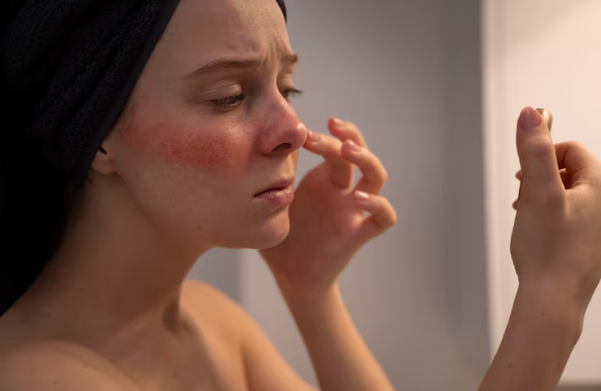Acne is commonly associated with oily skin, but many people with dry or sensitive skin also struggle with breakouts. Treating acne on dry skin can be a delicate process—one that requires patience, care, and the right combination of acne treatment products that won’t worsen dryness or cause irritation.
If you’re wondering how long acne treatment takes for dry skin, the answer depends on several key factors including the severity of the acne, the products used, your skincare routine, and your skin’s natural healing process. This article explores timelines, treatment options, and tips for using acne products for dry skin effectively.
Understanding Acne on Dry Skin
Dry skin lacks sufficient moisture and sebum (the skin’s natural oil), which can cause the skin to become flaky, tight, or irritated. Surprisingly, this lack of oil doesn’t prevent acne—rather, it can contribute to breakouts in several ways:
- Compromised skin barrier: When the skin is dry or damaged, it becomes more prone to inflammation and infection.
- Irritating products: Some acne treatments designed for oily skin can be too harsh, stripping essential oils and worsening dryness.
- Poor exfoliation: Dry skin tends to shed cells slowly, leading to clogged pores and small bumps or comedones.
Because of these challenges, treating acne on dry skin requires a tailored approach using gentle, hydrating products that fight acne without causing further irritation.
How Long Does Acne Treatment Usually Take?
For individuals with dry skin, most acne treatments begin to show noticeable improvement within 6 to 12 weeks. However, the exact duration may vary depending on:
- The type of acne (whiteheads, blackheads, cysts, etc.)
- The consistency of your routine
- Your skin’s sensitivity and reaction to certain ingredients
Mild Acne (whiteheads, small pimples):
- Timeframe: 4 to 8 weeks
- Treatment: Gentle cleansers, hydrating moisturisers with acne-fighting ingredients like niacinamide or azelaic acid
Moderate Acne (inflammation, papules):
- Timeframe: 6 to 12 weeks
- Treatment: A combination of low-strength retinoids, salicylic acid, and moisturisers suitable for dry skin
Severe Acne (cysts, nodules):
- Timeframe: 3 to 6 months or more
- Treatment: Often requires professional treatment including prescription medication or dermatological procedures
It’s essential to remember that acne may temporarily worsen before it improves—a phase known as “purging.” This is common with ingredients like retinoids and AHAs.
Best Acne Products for Dry Skin
When choosing acne products for dry skin, the goal is to treat acne without stripping the skin’s natural moisture barrier. Look for products that balance active acne-fighting ingredients with hydrating, soothing components.
Gentle, Hydrating Cleanser
Avoid foaming or alcohol-based cleansers that can leave dry skin feeling tight and flaky. Instead, use a mild, non-comedogenic cleanser with added moisturising agents like glycerin or ceramides.
Moisturiser with Barrier Repair Ingredients
A rich moisturiser is key in any dry skin routine. Choose products with:
- Hyaluronic acid to draw in moisture
- Ceramides to repair the skin barrier
- Niacinamide for inflammation and redness
Non-Drying Spot Treatments
Skip benzoyl peroxide-based spot treatments unless in very low concentrations (e.g., 2.5%), and use sulfur or tea tree oil-based alternatives that are milder on dry skin.
Retinoids (Low Strength)
If your dermatologist recommends retinoids, start slowly. Use only 1–2 times per week and buffer with moisturiser to reduce irritation. Look for formulations specifically made for sensitive or dry skin.
Azelaic Acid
This is an excellent ingredient for acne-prone dry skin. It reduces redness, fights bacteria, and doesn’t overly dry the skin.
Daily Routine Tips for Treating Acne with Dry Skin
To ensure effective acne treatment without further drying out your skin, follow these simple yet important tips:
Limit Washing to Twice a Day

Over-cleansing can strip essential oils. Wash once in the morning and once at night using a hydrating cleanser.
Always Moisturise
Never skip moisturiser—even if you’re applying active acne treatments. Moisturising prevents flaking and maintains a healthy skin barrier, which helps acne treatments work more effectively.
Avoid Over-Exfoliating
Physical scrubs can damage already dry, acne-prone skin. Limit chemical exfoliation (like glycolic or salicylic acid) to once a week unless otherwise directed.
Use Sunscreen Daily

Many acne treatments make the skin more sensitive to UV damage. Use a non-comedogenic sunscreen with SPF 30+ every day to prevent post-inflammatory hyperpigmentation and protect healing skin.
Introduce Actives Slowly
If using products with retinoids or acids, introduce them gradually to allow your skin time to adjust and prevent excessive dryness or irritation.
When to See a Dermatologist
If your acne doesn’t improve after 8–12 weeks of consistent treatment with suitable products for dry skin, it may be time to consult a dermatologist. They can:
- Diagnose underlying skin conditions such as eczema or rosacea
- Prescribe medications like topical antibiotics, low-dose retinoids, or hormonal therapies
- Recommend in-clinic treatments like chemical peels, microneedling, or light therapy suited for sensitive or dry skin
Conclusion
The length of time it takes for acne treatment to work on dry skin depends on the type and severity of acne, your skincare routine, and how your skin reacts to various ingredients. While some people may see results within a month, others may need a few months of consistent, gentle care to notice meaningful improvement.
The key is to choose acne products for dry skin that not only combat breakouts but also nourish and support your skin barrier. A combination of hydrating ingredients and slow introduction of actives will go a long way in clearing acne while keeping your skin calm, smooth, and flake-free.

